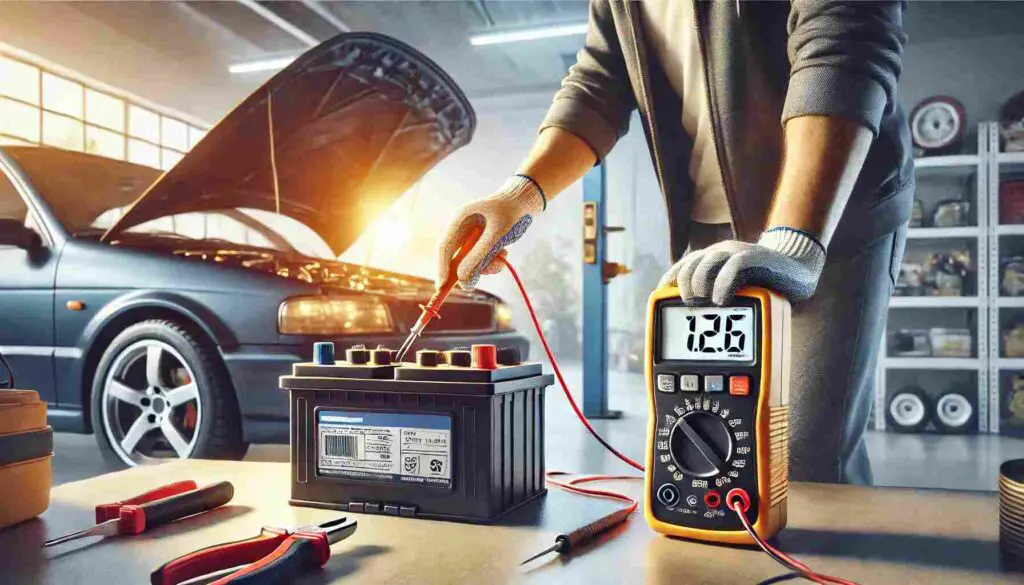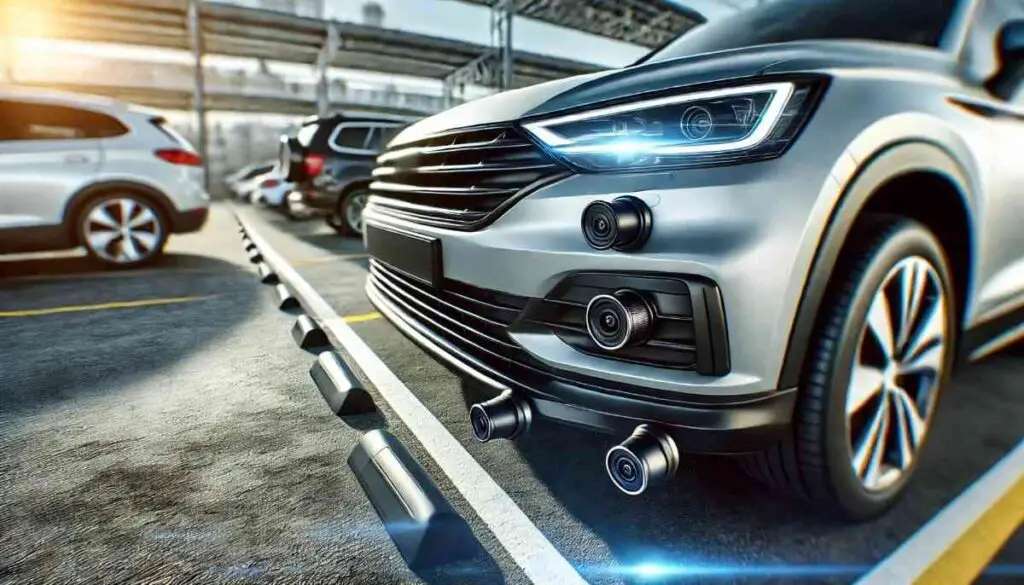In today’s fast-paced world, child safety is paramount, especially when traveling in a vehicle. One of the crucial aspects of ensuring your child’s safety on the road is the correct installation of their car seat. Evenflo car seats are renowned for their safety features, and in this comprehensive guide, we will walk you through the step-by-step process of properly installing an Evenflo car seat base. Our aim is to provide you with the knowledge and guidance to make sure your child’s car seat is securely installed, promoting their safety and peace of mind during every journey.
I. Importance of Proper Car Seat Installation
Proper car seat installation is a non-negotiable aspect of child safety when traveling by car. According to statistics, many injuries can be prevented by correctly installing a car seat. This guide is designed to help you master the art of installing an Evenflo car seat base with ease and precision.
Overview of Evenflo Car Seats and Their Safety Features
Evenflo is a trusted name in the world of child safety products, known for its commitment to producing high-quality car seats. Before we dive into the installation process, let’s take a moment to understand the key safety features that make Evenflo car seats stand out.
II. Installing Evenflo Car Seat Base with LATCH and Load Leg
Properly installing the car seat base with the LATCH system (Lower Anchors and Tethers for Children) and the load leg is essential for ensuring your child’s safety during car journeys. This method provides a secure and stable foundation for your Evenflo car seat. Follow these steps for a safe and secure installation:
Parking on Level Ground
- Choose a Level Surface: Begin by selecting a suitable location to park your vehicle. Look for a flat and level surface, such as a driveway or parking lot. Parking on level ground ensures that your car seat installation will be stable and secure.
Placing the Base in the Center of the Vehicle Seat
- Locate the Center Position: Identify the center of the vehicle’s rear seat. This is often the safest location for installing a car seat as it provides the most protection in the event of a side-impact collision.
- Position the Car Seat Base: Carefully place the car seat base in the center of the vehicle seat. Ensure that the base is aligned with the vehicle seat and is not hanging over the edges. Proper placement is crucial for optimal safety.
Extending and Locking the Load Leg into Place
- Understand the Load Leg: The load leg is a unique safety feature found in some Evenflo car seats. It provides additional stability by extending from the car seat base to the vehicle floor.
- Extend the Load Leg: As per the manufacturer’s instructions for your specific car seat model, extend the load leg until it makes contact with the vehicle floor.
- Lock the Load Leg: Securely lock the load leg into place. Ensure that it is firmly in position and not loose or wobbly. Properly locking the load leg enhances the stability of the car seat installation.
Attaching LATCH Connectors to Anchor Bars
- Locate LATCH Anchor Bars: Identify the lower anchors in your vehicle. These are typically located in the crease of the vehicle seat, where the seatback and seat cushion meet.
- Attach LATCH Connectors: Attach the LATCH connectors from the car seat base to the designated anchor bars in your vehicle. Make sure that the connectors click securely into place.
Ensuring Base Security with a Pull Test
- Perform a Pull Test: After attaching the LATCH connectors, perform a pull test to verify that the car seat base is securely fastened. Apply firm pressure to the car seat from various directions, attempting to move it in different directions.
- Minimal Movement: The car seat base should not move more than one inch in any direction during the pull test. If it moves excessively, recheck the LATCH connectors and the load leg to ensure they are properly secured.
Properly installing the car seat base with the LATCH system and load leg is crucial for your child’s safety. This installation method provides excellent stability and protection in the event of a collision. Always refer to the car seat’s user manual for specific instructions and guidelines related to your car seat model. Child safety is our top priority, and a secure car seat installation is a fundamental step in achieving that goal.
III. Installing Evenflo Car Seat Base with Vehicle Seat Belt
When installing your Evenflo car seat base using the vehicle seat belt, it’s essential to follow precise steps to ensure a secure and safe installation. This method provides a reliable foundation for your car seat. Follow these steps for a secure installation:
Parking on Level Ground
- Choose a Level Surface: Just like with the LATCH installation, start by selecting a flat and level surface for parking your vehicle. This ensures a stable and secure installation.
Placing the Base in the Center of the Vehicle Seat
- Locate the Center Position: Identify the center of the vehicle’s rear seat, which is often the safest location for installing a car seat due to its enhanced protection in side-impact collisions.
- Position the Car Seat Base: Carefully place the car seat base in the center of the vehicle seat, aligning it with the vehicle seat. Ensure that the base is fully seated and not hanging over the edges. Proper placement is crucial for optimal safety.
Routing the Seat Belt Through Belt Guides
- Locate Belt Guides: Check for belt guides on the car seat base. These guides are designed to route the vehicle seat belt through them securely.
- Thread the Seat Belt: Carefully thread the vehicle seat belt through the designated belt guides on the car seat base, following the instructions provided in the car seat’s user manual. Ensure that the belt is correctly positioned within the guides.
Buckling and Tightening the Seat Belt
- Buckle the Seat Belt: Insert the seat belt’s metal tongue into the buckle and ensure that it clicks into place securely.
- Tighten the Seat Belt: After buckling the seat belt, pull the seat belt tight to remove any slack. Ensure that the seat belt lies flat and snug against the car seat base.
Ensuring Base Security with a Pull Test
- Perform a Pull Test: Once the seat belt is securely fastened, perform a pull test to confirm that the car seat base is firmly in place. Apply firm pressure in various directions to assess the base’s stability.
- Minimal Movement: During the pull test, the car seat base should not move more than one inch in any direction. If you notice excessive movement, recheck the seat belt’s tightness and the placement of the car seat base.
Properly installing the car seat base with the vehicle seat belt is essential for ensuring your child’s safety during car journeys. This installation method provides a secure and stable foundation for the car seat. Always refer to the car seat’s user manual for specific instructions and guidelines related to your car seat model. Child safety is our top priority, and a secure car seat installation is a fundamental step in achieving that goal.
IV. Additional Tips for Installation
Ensuring Base Level Using Bubble Level Indicators
Many Evenflo car seats come equipped with bubble level indicators. Use these indicators to ensure that the base is level for optimal safety.
Ensuring Base Flush Against the Vehicle Seat
Confirm that the car seat base is flush against the vehicle seat, leaving no gaps that could compromise safety.
Checking Load Leg Extension and Locking
For car seats with a load leg, double-check that it’s extended and locked into place as recommended by the manufacturer.
Verifying LATCH Connectors’ Secure Attachment
Reconfirm the secure attachment of the LATCH connectors to the anchor bars.
Confirming the Tightness of the Vehicle Seat Belt
When installing your Evenflo car seat with a seat belt, ensuring that the seat belt is tightly secured is essential for your child’s safety during car journeys. A snug and secure seat belt installation helps prevent the car seat from moving in the event of a collision or sudden stop. Follow these steps to confirm that the seat belt is correctly and tightly fastened:
- Thread the Seat Belt Through the Car Seat Base: Position the car seat on the vehicle seat and carefully thread the vehicle’s seat belt through the designated belt guides on the car seat base. Refer to the car seat’s user manual for the specific location of the belt guides.
- Buckle the Seat Belt: Insert the seat belt’s metal tongue into the buckle and ensure it clicks into place securely.
- Pull the Seat Belt Tightly: After buckling the seat belt, firmly grasp the shoulder belt (the upper portion of the seat belt) and the lap belt (the lower portion of the seat belt). Apply even pressure as you pull the seat belt tight.
- Remove Excessive Slack: While holding both the shoulder belt and the lap belt, remove any slack or excess belt material by pulling it gently but firmly towards the vehicle’s seat. Ensure that the seat belt lies flat and snug against the car seat base.
- Lock the Seat Belt: Many vehicle seat belts have a locking feature for securing car seats. To engage this feature, slowly pull the seat belt all the way out from the retractor and then slowly retract it back into place. This action should lock the seat belt in a tight and secure position.
- Double-Check for Tightness: After locking the seat belt, double-check that the seat belt is tightly secured. Attempt to wiggle the car seat from side to side and front to back. There should be minimal movement, ideally less than one inch in any direction.
- Confirm Chest Clip and Harness Position: Ensure that the chest clip on the car seat harness is correctly positioned at the center of your child’s chest, aligned with their armpits. Verify that the harness straps are snug but not overly tight, allowing your child to breathe comfortably and move their arms freely.
- Perform a Final Safety Check: Before starting your car’s engine, perform a final safety check to ensure that the car seat is securely fastened with the seat belt and that your child is properly secured.
- Refer to the Vehicle Manual: Always refer to your vehicle’s manual for specific information regarding seat belt locking mechanisms and securing car seats with seat belts.
Confirming the tightness of the vehicle seat belt is a critical step in ensuring your child’s safety during car journeys, especially when using a seat belt installation method. A secure seat belt installation helps prevent the car seat from shifting or moving, providing optimal protection in the event of an accident or sudden stop.
V. Installing the Car Seat on the Base
After correctly installing the car seat base in your vehicle, the next essential step is to attach the car seat to the base securely. This step ensures that your child’s car seat is properly secured and ready for travel. Follow these steps for a safe and secure connection:
- Position the Car Seat: Hold the car seat with the handle facing the rear of your vehicle. Approach the base cautiously, aligning the connectors on the bottom of the car seat with the corresponding anchor points on the base.
- Gently Lower the Car Seat: Lower the car seat onto the base while ensuring that the connectors smoothly engage with the anchor points. Take care not to force the connection; it should happen naturally if properly aligned.
- Listen for the Audible Click: Most Evenflo car seats are designed with a built-in feature that produces an audible click when the car seat is securely attached to the base. This click is a clear indication that the connection is tight and reliable.
- Verify a Secure Fit: After hearing the click, perform a visual check to confirm that the car seat is firmly and snugly attached to the base. Ensure that there is no visible gap between the car seat and the base.
- Test for Stability: Gently try to wiggle the car seat from side to side and front to back. It should not move more than one inch in any direction. If the car seat feels loose, disconnect it and reattach it to the base, ensuring proper alignment and a secure connection.
- Double-Check the Chest Clip: Ensure that the chest clip on the car seat harness is correctly positioned at the center of your child’s chest, aligned with their armpits.
- Confirm Harness Tightness: Verify that the harness straps are snug but not overly tight. Your child should be able to breathe comfortably and move their arms freely.
- Review the User Manual: Always refer to the car seat’s user manual for specific instructions regarding the attachment of the car seat to the base. Different Evenflo car seat models may have slight variations in the attachment process.
Attaching the car seat to the base is a crucial step in ensuring your child’s safety during car journeys. A secure connection between the car seat and the base is essential to protect your child in the event of a collision or sudden stop.
VI. Certified Child Passenger Safety Technician
Ensuring the safety of your child during car journeys is of paramount importance. One way to add an extra layer of assurance and expertise to your car seat installation is by having a certified Child Passenger Safety Technician (CPST) inspect your setup. These professionals are trained to provide guidance and support for correctly installing and using car seats. Here’s why consulting a CPST can be invaluable:
1. Expertise and Training: Certified Child Passenger Safety Technicians undergo rigorous training and certification programs. They are well-versed in the latest safety standards and guidelines for car seat installation.
2. Hands-On Assistance: CPSTs can provide hands-on assistance with the installation of your Evenflo car seat. They know the specific nuances of various car seat models and can ensure that yours is correctly installed.
3. Personalized Guidance: Every child and car seat installation is unique. A CPST can provide personalized guidance based on your child’s age, size, and the specific vehicle you use.
4. Answering Questions: If you have questions or concerns about your car seat or its installation, a CPST can address them comprehensively. They can explain safety features, harness adjustments, and other important details.
5. Verification of Correct Installation: The CPST will thoroughly inspect your car seat installation to verify that it meets all safety requirements. They can make necessary adjustments or corrections to ensure optimal safety.
6. Education: CPSTs not only install car seats but also educate parents and caregivers on how to use them correctly. They can teach you proper harnessing techniques, chest clip positioning, and more.
7. Peace of Mind: Knowing that a trained professional has inspected your car seat installation can provide peace of mind. You can have confidence that your child is traveling safely.
8. Updates on Regulations: Child safety regulations and recommendations can change over time. CPSTs stay up-to-date with the latest guidelines and can inform you of any updates that may affect your car seat usage.
To find a certified Child Passenger Safety Technician in your area, you can check with local hospitals, fire departments, or police departments, as they often have CPSTs on staff or can provide referrals. It’s recommended to schedule a car seat inspection with a CPST before your child’s first ride in the car seat and periodically thereafter as your child grows.
Remember that child safety is a shared responsibility, and consulting a certified Child Passenger Safety Technician is a proactive step toward ensuring that your Evenflo car seat is installed correctly and used safely for your child’s protection during every car journey.
VII. Installing Evenflo Car Seat with Base for Newborns
Installing a car seat for a newborn requires special attention to detail to ensure the utmost safety and comfort for your little one. Newborns have unique needs due to their delicate size and fragility. Follow these steps to properly install your Evenflo car seat with the base for newborns:
- Read the User Manual: Start by thoroughly reading the user manual provided with your Evenflo car seat and base. The manual contains essential information on installing the car seat for newborns, including specific guidelines for your car seat model.
- Select the Proper Location: Choose the appropriate seating location in your vehicle for rear-facing installation. Refer to both your vehicle’s manual and the car seat manual for guidance on the safest position.
- Adjust the Recline Angle: Ensure that the car seat base is correctly adjusted for the recline angle suitable for a newborn. Some Evenflo car seats have adjustable recline settings that need to be set correctly. Refer to the recline indicator on the car seat base to verify the angle.
- Thread the Harness Straps: If your car seat comes with a harness system, thread the harness straps through the designated slots in the car seat shell. These slots are typically at or just below your child’s shoulders.
- Place Your Newborn in the Seat: Carefully place your newborn in the car seat, ensuring their back is against the car seat’s backrest. Be sure to support their head and neck, which are still developing and fragile.
- Secure the Harness: Fasten the harness buckle and ensure it clicks into place. The harness should fit snugly but not too tight, allowing your newborn to breathe comfortably and move their arms freely.
- Position the Chest Clip: Properly position the chest clip at the center of your newborn’s chest, aligned with their armpits. Ensure that it is snug but not restrictive.
- Verify the Harness Straps: Ensure that the harness straps lie flat and are not twisted. They should be properly adjusted for your newborn’s size, ensuring a secure fit.
- Secure the Crotch Strap: If your car seat has a crotch strap, make sure it is positioned properly and securely fastened. The crotch strap prevents your newborn from sliding out from under the harness.
- Perform a Safety Check: Conduct a thorough safety check to confirm that the car seat and base are securely installed and that your newborn is properly secured. Double-check all harness straps, connections, and the recline angle.
- Refer to the Vehicle Manual: Always refer to your vehicle’s manual for additional information on securing car seats, especially for newborns.
Installing your Evenflo car seat with the base for newborns is a critical step in ensuring your newborn’s safety and comfort during car journeys. The rear-facing orientation is the safest choice for infants, as it provides optimal protection for their developing head, neck, and spine
VIII. Installing in the Rear-Facing Position
Rear-facing installation is a critical aspect of ensuring your child’s maximum safety when traveling by car. This orientation is recommended for infants and young children due to its effectiveness in protecting their fragile bodies in the event of a collision. Follow these steps to correctly install your Evenflo car seat in the rear-facing position, always adhering to the manufacturer’s instructions for your specific car seat model:
- Read the User Manual: Start by thoroughly reading the user manual provided with your Evenflo car seat. The manual contains essential information on rear-facing installation, including specific guidelines for your car seat model.
- Select the Proper Location: Choose the appropriate seating location in your vehicle for rear-facing installation. Refer to both your vehicle’s manual and the car seat manual for guidance on the safest position.
- Check the Recline Angle: Ensure that the car seat is properly reclined for rear-facing installation. Some Evenflo car seats have adjustable recline settings that need to be set correctly. Refer to the recline indicator on the car seat base to verify the angle.
- Thread the Harness Straps: Thread the harness straps through the designated slots in the car seat shell. These slots are typically at or just below your child’s shoulders.
- Place Your Child in the Seat: Gently seat your child in the car seat, making sure their back is against the car seat’s backrest.
- Secure the Harness: Fasten the harness buckle and ensure it clicks into place. Double-check that the harness is snug but not too tight, allowing your child to breathe comfortably and move their arms freely.
- Position the Chest Clip: Properly position the chest clip at the center of your child’s chest, aligned with their armpits.
- Verify the Harness Straps: Ensure that the harness straps lie flat and are not twisted. They should not have any slack that can compromise your child’s safety.
- Secure the Crotch Strap: If your car seat has a crotch strap, make sure it is properly positioned and securely fastened. The crotch strap prevents your child from sliding out from under the harness.
- Perform a Safety Check: Conduct a final safety check to confirm that the car seat is securely installed in the rear-facing position. Double-check all harness straps, connections, and the recline angle.
- Refer to the Vehicle Manual: Always refer to your vehicle’s manual for additional information on securing car seats, especially for rear-facing installations.
Installing your Evenflo car seat in the rear-facing position is a critical safety measure for your child, particularly during their early years. The rear-facing orientation provides optimal protection for their head, neck, and spine, which are still developing and vulnerable.
By carefully following the manufacturer’s instructions and adhering to the guidelines in your car seat’s user manual, you can ensure that your Evenflo car seat is correctly installed in the rear-facing position, providing your child with the highest level of safety during car journeys. Child safety is our top priority, and rear-facing installation is a vital step in achieving that goal.
IX. Ensuring Correct Angle
The correct angle of the car seat is crucial for both your child’s safety and their comfort during car journeys. Ensuring that the car seat is properly reclined helps maintain the integrity of the safety features and ensures a comfortable ride. Here’s how to verify and adjust the car seat’s angle using the recline indicator on the base:
- Understand the Recline Indicator: Familiarize yourself with the recline indicator located on the car seat base. This indicator is designed to help you achieve the correct angle for your child’s age and size.
- Place Your Child in the Seat: Gently seat your child in the car seat, making sure their back is against the car seat’s backrest.
- Check the Recline Indicator: Look at the recline indicator to determine if the car seat is at the correct angle. The indicator typically has visual cues, such as a level or markers, to guide you.
- Adjust the Recline Angle: If the recline indicator shows that the car seat is not at the correct angle, make necessary adjustments. Some Evenflo car seats have adjustable recline settings that allow you to achieve the correct angle for your child’s age and size.
- Follow the Manufacturer’s Instructions: Refer to the car seat’s user manual for specific guidelines on adjusting the recline angle. The manual will provide clear instructions on how to achieve the correct angle for your car seat model.
- Verify Comfort: While ensuring the correct angle is essential for safety, it’s also important to confirm that your child is comfortable in their car seat. Ensure that the angle provides adequate support for their head and neck.
- Double-Check Before Each Ride: Before starting your car’s engine for each journey, take a moment to verify that the car seat is still at the correct angle. This is especially important if you’ve removed the car seat and reinstalled it.
Correctly positioning the car seat at the appropriate angle is essential for several reasons:
- Safety: The correct angle helps keep your child’s head, neck, and spine aligned during a crash, reducing the risk of injury.
- Comfort: A properly reclined car seat ensures that your child travels comfortably, allowing them to rest or sleep during the journey.
- Proper Harness Function: The harness system functions most effectively when the car seat is at the correct angle, distributing crash forces evenly.
- Support for Newborns: Achieving the right angle is especially crucial for newborns and infants, as it helps keep their airway open and maintains proper breathing.
By following the recline indicator and the manufacturer’s instructions, you can ensure that your Evenflo car seat is correctly positioned for your child’s safety and comfort. Child safety is paramount, and achieving the correct angle is a vital step in providing your child with a secure and pleasant car ride experience.
X. Securing Car Seat Straps
Securing your child in the car seat with the harness straps is a fundamental aspect of ensuring their safety during every car journey. Properly adjusted and snug harness straps are vital for protecting your child in the event of an accident or sudden stop. Here’s how to securely fasten the harness straps following the manufacturer’s guidelines:
- Position Your Child: Place your child in the car seat, ensuring they are seated comfortably with their back against the car seat’s backrest.
- Thread the Harness Straps: Carefully thread the harness straps through the designated slots in the car seat shell. These slots are usually located at or slightly above your child’s shoulders.
- Buckle the Harness: Fasten the harness buckle securely, ensuring it clicks into place. This indicates that it is properly latched.
- Adjust the Straps: Depending on your child’s size and age, you may need to adjust the harness straps to the appropriate height. Refer to the car seat’s user manual for specific guidelines on strap adjustment.
- Tighten the Straps: With the harness buckled, gently pull the harness adjustment strap(s) to remove any slack. The straps should lie flat and snug against your child’s shoulders and chest. You should not be able to pinch any excess strap material.
- Check Chest Clip Position: Ensure that the chest clip is correctly positioned at the center of your child’s chest, aligned with their armpits.
- Verify Comfort: Make sure that the harness straps are snug but not too tight. Your child should be able to breathe comfortably and move their arms freely.
- Inspect for Twists: Double-check that the harness straps are not twisted. Twisted straps can reduce their effectiveness in securing your child.
- Secure the Crotch Strap: If your car seat has a crotch strap, ensure that it is properly positioned and securely fastened. The crotch strap prevents your child from sliding out from under the harness.
- Reconfirm the Harness: Before starting your car’s engine, give the harness straps a final check to ensure they are properly secured and snug.
Properly secured harness straps are essential for your child’s safety during car travel. They distribute crash forces evenly, reducing the risk of injury. Keep in mind that the harness strap adjustments may need to be updated as your child grows. Always follow the manufacturer’s guidelines for strap height and tightness based on your child’s age, weight, and height.
The car seat’s user manual provides specific instructions for harness strap adjustment and positioning. Familiarize yourself with these guidelines to ensure that your child is safely secured in the car seat for every ride. Child safety is our top priority, and properly securing the harness straps is a key element in achieving that goal.
XI. Centering the Chest Clip
Properly positioning the chest clip on your child is a critical step in ensuring their safety while traveling in an Evenflo car seat. The chest clip, also known as the harness chest clip, plays a vital role in securing your child in the car seat harness. When correctly centered, it provides optimal safety and comfort. Here’s how to ensure the chest clip is in the right position:
- Locate the Chest Clip: The chest clip is a plastic or metal buckle located at the midpoint of the harness straps on your Evenflo car seat.
- Buckle Your Child In: Gently place your child in the car seat and secure the harness straps over their shoulders.
- Position the Chest Clip: With the harness straps securely fastened, slide the chest clip down to the center of your child’s chest. Ensure that it sits at armpit level.
- Check for Proper Placement: Confirm that the chest clip is neither too high nor too low. It should be aligned with your child’s armpits, directly over their sternum (the breastbone).
- Verify Comfort and Freedom of Movement: Ensure that the chest clip is snug but not overly tight. It should allow your child to breathe comfortably and move their arms freely.
Properly centering the chest clip is essential for several reasons:
- Optimal Harness Positioning: Placing the chest clip at the center of your child’s chest ensures that the harness straps are correctly positioned over their shoulders. This distributes crash forces evenly and minimizes the risk of injury.
- Prevention of Slippage: A correctly positioned chest clip helps prevent the harness straps from slipping off your child’s shoulders during a collision or sudden stop.
- Comfort and Safety: When the chest clip is correctly aligned with your child’s armpits, it provides both comfort and safety. It keeps the harness snug and secure without causing discomfort.
- Protection of Vital Organs: Proper chest clip placement helps protect the chest area and vital organs in the event of an accident.
Remember that the chest clip’s correct positioning is not only crucial for safety but also for comfort. Children are more likely to remain content and relaxed during car rides when their harnesses are adjusted properly.
Always refer to the car seat’s user manual for specific guidelines on harness strap placement and chest clip positioning, as these may vary slightly between different Evenflo car seat models. Taking the time to ensure the chest clip is centered correctly is a small but vital step in providing your child with a safe and comfortable car seat experience.
XII. Regular Car Seat Installation Checks
Ensuring the ongoing safety of your child while traveling by car requires more than just the initial installation. As your child grows and experiences different car journeys, it’s vital to conduct regular checks to confirm that the car seat remains securely installed and functioning as intended. Here are some essential tips for conducting these crucial checks:
1. Inspect for Loose Connections: Regularly examine the LATCH connectors, if applicable, and the seat belt to ensure they are still securely attached to the car seat base and anchor points in your vehicle. Any signs of looseness should be addressed immediately.
2. Check the Base Position: Over time, the car seat base may shift slightly due to vehicle movement or adjustments. Reconfirm that the base is still positioned in the center of the vehicle seat and remains level. Refer to the bubble level indicators, if available, to verify the correct angle.
3. Verify Load Leg Stability: If your Evenflo car seat is equipped with a load leg, check that it’s still extended and securely locked into position. This feature contributes significantly to stability during a collision.
4. Inspect for Wear and Tear: Examine the car seat’s straps, buckles, and harness components for any signs of wear or damage. Ensure that the straps are not twisted and that they operate smoothly. If you notice any issues, contact the manufacturer for guidance.
5. Recheck the Tightness of the Seat Belt: For car seats installed using a seat belt, periodically confirm that the belt is still tightly secured and free from excessive slack. Make any necessary adjustments to maintain a secure fit.
6. Ensure the Car Seat’s Angle: If you’re using a rear-facing car seat, regularly verify that the car seat is still at the correct angle for your child’s age and size. Follow the recline indicator on the base to make adjustments if needed.
7. Evaluate the Chest Clip Position: Check that the chest clip is correctly positioned at the center of your child’s chest. It should not be too high or too low to provide optimal protection.
8. Inspect for Debris and Objects: Occasionally, debris or small objects can become lodged between the car seat and the vehicle seat. Remove any foreign objects to maintain a proper fit.
9. Refer to the User Manual: Always keep the user manual for your Evenflo car seat handy and review it periodically. It contains valuable information on maintenance and safety checks specific to your car seat model.
By performing these regular car seat installation checks, you can ensure that your child remains safe and secure during every car journey. Remember that child safety is an ongoing commitment, and your diligence in maintaining the integrity of the car seat installation is a crucial part of that commitment.
XIII. Frequently Asked Questions (FAQs)
How do you set up an Evenflo car seat for a newborn?
Setting up an Evenflo car seat for a newborn involves proper reclining, secure installation, and correct strap adjustments. Follow the manufacturer’s instructions carefully.
Can you install Evenflo car seat without a base?
Yes, some Evenflo car seats can be installed without a base using the vehicle’s seat belt. Refer to the car seat’s manual for specific instructions.
How do you install a car seat base?
Installing a car seat base involves securing it either with the LATCH system or a vehicle seat belt. Detailed instructions can be found in the car seat’s manual.
Do Evenflo car seats have bases?
Many Evenflo car seats come with bases to ensure secure installation and added safety.
Is Evenflo a good car seat for a newborn?
Evenflo is a reputable brand known for producing safe and reliable car seats suitable for newborns.
Are Evenflo infant car seats safe?
Yes, Evenflo infant car seats are designed with safety as a top priority and undergo rigorous testing to meet safety standards.
What country is Evenflo from?
Evenflo is an American company headquartered in Boston, Massachusetts.
Is Evenflo a good brand?
Evenflo is a well-established brand known for producing quality child safety products, including car seats.
How long are Evenflo car seats good for?
The lifespan of an Evenflo car seat can vary depending on the model and its usage guidelines. Refer to the specific car seat’s manual for information on its lifespan.
Is Evenflo a safe car seat brand?
Yes, Evenflo is recognized as a safe car seat brand that prioritizes child safety.
XIV. Conclusion
In conclusion, the proper installation of your Evenflo car seat base is an essential step in ensuring your child’s safety while traveling. We have covered every aspect of this process in detail, from choosing the right location to attaching the car seat securely. By following these steps and considering the frequently asked questions, you can rest assured that your child will be protected during every journey. Remember that your child’s safety is our top priority, and we hope this guide helps you achieve just that.
For a visual representation of the installation steps, consider referring to the manufacturer’s diagram in the user manual. It provides a clear and concise overview of the process.
By following these guidelines, you can confidently install your Evenflo car seat base and provide your child with a safe and secure ride.
Related Articles :
- A Comprehensive Guide to Doona Car Seat Installation with Base
- A Comprehensive Guide to Adjusting Graco Car Seat Straps
- Car Seat Installation in Melbourne
- A Comprehensive Guide to Car Seat Installation in a Chrysler Pacifica
- Car Seat Installation: Ensuring Child Safety with Expertise
- Car Seat Installation for Newborns: Ensuring Safety from Day One
- A Step-by-Step Guide on How to Install Car Seat Covers
- A Comprehensive Guide to Installing a Car Seat with a Seatbelt
- The Safest Way to Install a Car Seat: A Comprehensive Guide
- Ensuring Proper Car Seat Installation: A Step-by-Step Guide
- Are Car Seats Interchangeable? A Comprehensive Guide
- Why Won’t the Salvation Army Accept Baby Car Seats?
- Car Seat Installation with Baby Bunting
- Are Car Seat Inserts Safe? Understanding the Controversy
- Review of the Top 5 Graco Car Seats for Your Child’s Safety
- Exploring Ways to Acquire a Free Car Seat: Ensuring Child Safety







